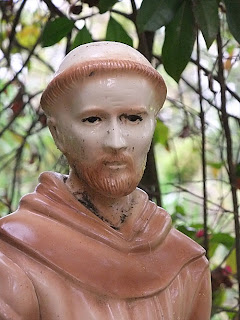Re-reimagining Mary Magdalene
In 2018, I completed my first Mary Magdalene piece based on a theory I had stumbled across that Mary of Magdala was a nickname, like Peter the Rock. She was Mary the Tower, not Mary from Magdala. However, academics are not agreed on this. Not that it mattered because I took the idea and ran with it. (This is how stories happen.)
Here is a video going through each of the women in her tower. (2:44 one)
And then 2020 happened. And I took a look at this painting that sits in my altar space and thought, in light of the injustices against people of color that has been going on for centuries, that while my first Mary Magdalene painting lifted up mostly white women leaders of the church, it was way past time to lift up women of color who have been leaders in the church. (And okay, one white woman, but it was for good reason!)
My second Mary Magdalene is a mirror image of the first (I basically traced and flipped the image, modifying the face using a reference photo and taking a fresh tracing of that for the canvas).
Starting from the bottom, the first woman is Junias — whose name was rewritten in the New Testament to be male because the transcribers had issue believing that an apostle could be a woman.
Perpetua, from North Africa, an early martyr, leaving behind writings.
Monica, also North African, long-suffering mother to St. Augustine.
Anna J. Cooper, who died in 1964 at 104, is in the Episcopal Church’s “Holy Men, Holy Women” as someone who loved learning (she got her Ph.D. in Paris) and teaching, insisted on equal education for people of color, and an advocate for Black women.
The one white woman is Constance, which I included as a nod to this season of pandemic. She was the superior of an order of nuns who came to Memphis to tend those sick and dying of yellow fever in 1878.









Comments
Post a Comment
Thank you for taking the time to leave a comment.